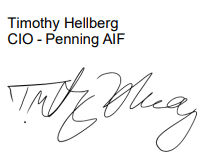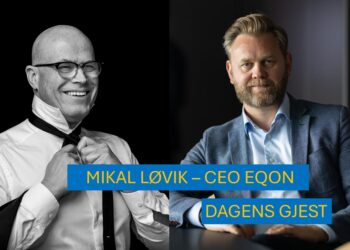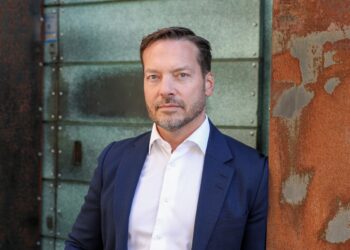Dette er en sak levert av Penning.
There is a paradigm shift currently going on in the world of digital assets. The days of raging bull runs going parabolic in assets like Bitcoin are long gone and have transgressed into market generated volatility in meme-coins instead. Likewise, the digital asset skeptics are getting both legs kicked out from underneath them, as institutional money cements a clear, and long needed, fundamental value base of what now could be considered the “blue chips” of digital assets.
But the effects are much larger than just volatility and fundamental values. We are seeing new investment classes forming too, in order to match the more sophisticated investment needs from institutions. And this is where a beautiful symbiosis of innovation, technology and experience takes form. A symbiosis everyone from professional fund managers down to individual retail investors can benefit greatly from.
SDAPS – what are they?
Structured Digital Asset Products, or SDAPS as we like to call them, are a completely new investment class of products that 12 months ago didn’t really exist.
Majority of investors are familiar with TradFi structured products. Complex products consisting of underlying baskets of mainly different derivatives. In common for all of them is that they provide advanced options where the issuer can structure the products to provide for example principal protection, as well as more aggressive products providing growing yields, larger than achievable during the same time periods through a “regular” leveraged trade.
What’s also typical for the TradFi structured products is they often require the investor to lock up capital for a long time, sometimes several years. And the minimum investment threshold is often in line with the quality of the product. Meaning, the higher the yield and/or the higher level of protection often means the higher the lowest accepted investment amount.
So, one could argue, that the real high quality structured products were created by bankers and wealth managers, offered through private banking divisions around the globe only to HNWI clients.
And this is where SDAPS come into play. They offer the same possibilities in terms of protection and yields, and sometimes due to the higher volatility in digital assets aggressive SDAPS can offer very high yields far surpassing similar TradFi products. But at the same time, due to the much more advance technology available in the digital asset ecosystem, these products can be created with as low lockups as a couple of days instead of years, and with minimum investment thresholds of as low as 10 USD.
This creates a completely new access for investors, large or small, no matter if they’re looking for protection or high yields.
Institutional Innovation – where competence goes, money flows.
So if we turn back the clock around 12 months back in time, somewhere in early 2022, we began seeing the real institutional money flows not necessarily flowing into digital assets yet, but rather the preparation for it. And with this trend shift in institutional mentality towards digital assets, some of the worlds smartest eyes, when it comes to finance, were turned and focused on digital assets.
We saw new companies, in some cases quietly behind the scenes, be formed by former investment bankers with niche experience in just structured products. Combining their knowledge with technology masterminds to begin creating this new investment class. Because these people knew that as institutions began opening the liquidity taps, the need for these types of products would surge.
Fast forward to now, and we have a wide range from boutique firms specializing in SDAPS, to most large digital asset exchanges offering some sort of SDAPS to their clients.
And this is only the beginning. Where competence goes, money flows was only the first step. We will now most likely see step two, which would be the same thing but reversed. Where money flows, competence goes. Meaning more bright people will come into the SDAPS space and create even more innovative products with higher yields and security.
Stabilization of the market
This new investment class does not only offer benefits to investors in terms of the actual products. They also have a secondary benefit in terms of market volatility.
You see SDAPS are typically structured in a way where you combine one or several yield generating products (for example staking) with a more advanced options portfolio.
Neither of these products are spurring on market volatility, and the general exposure to the actual underlying asset is typically low. As such, we see more money flow into these types of products that carry a lower level of affecting the underlying asset than the more traditional direct speculation in value of the asset we’ve seen historically.
This means more money in the system, but less used to spur on volatility. Which can already be seen by for example looking at the YTD price action of Bitcoin, where we are seeing more of a slow grind higher with technical pullbacks. Rather than the historical violent, erratic volatility associated with digital assets.
And naturally, with SDAPS being hard to structure in low liquid products, with too high volatility, we start seeing this distinction in the market where meme-coins and some altcoins take over the position as parabolic movers, and the large, liquid, well known assets present themselves as almost the new “bluechips” of digital assets.
How investors can benefit
So, with all this said, I believe you can now see how the picture has changed quite dramatically for the digital asset space. And for investors this does not only mean you can benefit by for example accessing SDAPS yourself through a wide arrange of platforms.
It also changes the fund landscape. Up until this point, pretty much all digital asset investment funds could be split into two categories. You had the traditional, heavily market correlated buyand-hold funds. A strategy that I would always argue against with a passion as I’m of the opinion there is no need for investors to pay professionals to do something so simple with their capital as just buy-and-holding. And in the second category you had more of the digital asset VC funds, not investing directly in digital assets, but rather companies active in the space. Which once again, isn’t unique in any way, it’s just another bracket of the VC industry.
But with these new products, much more sophisticated funds can emerge, something badly needed in the digital asset space. To give you an example, I am the manager Penning’s alternative investment fund, managing and having developed, optimized, and deployed all investment and risk management strategies. Our fund structure goes so far beyond the above mentioned traditional digital asset funds, that it’s not even comparable.
By using two overarching portfolios, the Alpha and the Beta portfolio, we can in the Beta portfolio keep our investors capital safe, only investing in principle protected SDAPS. Meaning we expose our investors capital to extremely low levels of risk in that portfolio.
We can then use the low risk generated profits from this portfolio to leverage them in the Alpha portfolio with much more aggressively yielding strategies.
It creates this sort of “best of both worlds” scenario, that could’ve never been done in TradFi due to the long lockup periods of those structured products.
But more importantly, this gives investors access to new types of funds like Penning’s. And the ability to get a combination of risk and reward never before achievable in TradFi or DeFi.
And that is a much-needed innovational change for the whole world of finance.


Timothy has had an extensive trading career over the last +12 years working both employed & through his own companies. Timothy began his TradFi career being both the youngest & the fastest person, to ever reach a senior management position at the then leading FX trading company in Scandinavia. From there he went on to join TrendTech AS in Norway, then a leading asset management & research company with government funding from the Sovereign Norway Oil Fund, to build up a new FX-focused trading desk, again as the youngest person on the trading desk. In 2013 he founded Algotech Ltd. developing & optimizing automated trading & risk systems, as well as trading for the AsAc hedge fund. Since 2022 Timothy manages Penning Group’s Alternative Investment Fund, returning +61% YTD, with a large focus on risk-limited investments and innovative investment products & strategies in the digital asset space.





